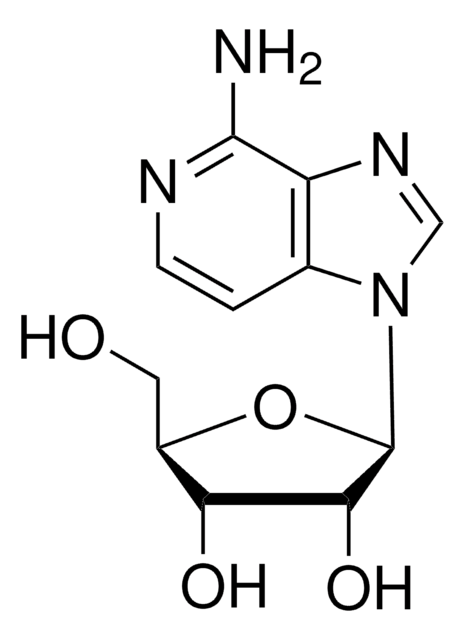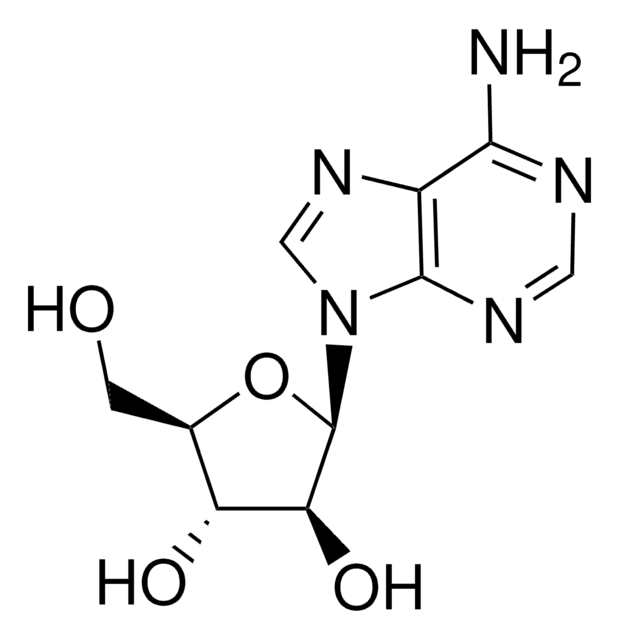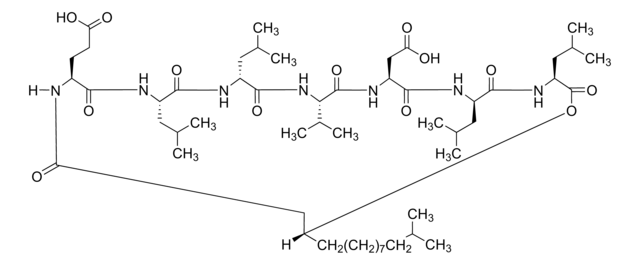SMB00287
Formycin A
from Streptomyces kaniharaensis, ≥98% (HPLC)
Synonym(s):
1-C-(7-Amino-1H-pyrazolo[4,3-d]pyrimidin-3-yl)-1,4-anhydro-(1S)-D-Ribitol, 7-Amino-3-(β-D-ribofuranosyl)-1H-pyrazolo[4,3-d]pyrimidine, 8-Aza-9-deazaadenosine, Formycin, NSC 102811
About This Item
Recommended Products
biological source
Streptomyces kaniharaensis
Quality Level
Assay
≥98% (HPLC)
form
powder
storage condition
(Keep container tightly closed in a dry and well-ventilated place.)
color
white to off-white
solubility
DMSO: soluble 1 mg/mL
H2O: soluble 3 mg/mL
antibiotic activity spectrum
viruses (Antiretroviral)
Mode of action
enzyme | inhibits
storage temp.
−20°C
SMILES string
Nc1ncnc2n(cnc12)[C@@H]3O[C@H](CO)[C@@H](O)[C@H]3O
InChI
1S/C10H13N5O4/c11-8-5-9(13-2-12-8)15(3-14-5)10-7(18)6(17)4(1-16)19-10/h2-4,6-7,10,16-18H,1H2,(H2,11,12,13)/t4-,6-,7-,10-/m1/s1
InChI key
OIRDTQYFTABQOQ-KQYNXXCUSA-N
Gene Information
human ... ADORA1(134) , ADORA2A(135) , ADORA2B(136) , ADORA3(140)
Looking for similar products? Visit Product Comparison Guide
General description
Biochem/physiol Actions
Packaging
Other Notes
Certificates of Analysis (COA)
Search for Certificates of Analysis (COA) by entering the products Lot/Batch Number. Lot and Batch Numbers can be found on a product’s label following the words ‘Lot’ or ‘Batch’.
Already Own This Product?
Find documentation for the products that you have recently purchased in the Document Library.
Customers Also Viewed
Our team of scientists has experience in all areas of research including Life Science, Material Science, Chemical Synthesis, Chromatography, Analytical and many others.
Contact Technical Service











